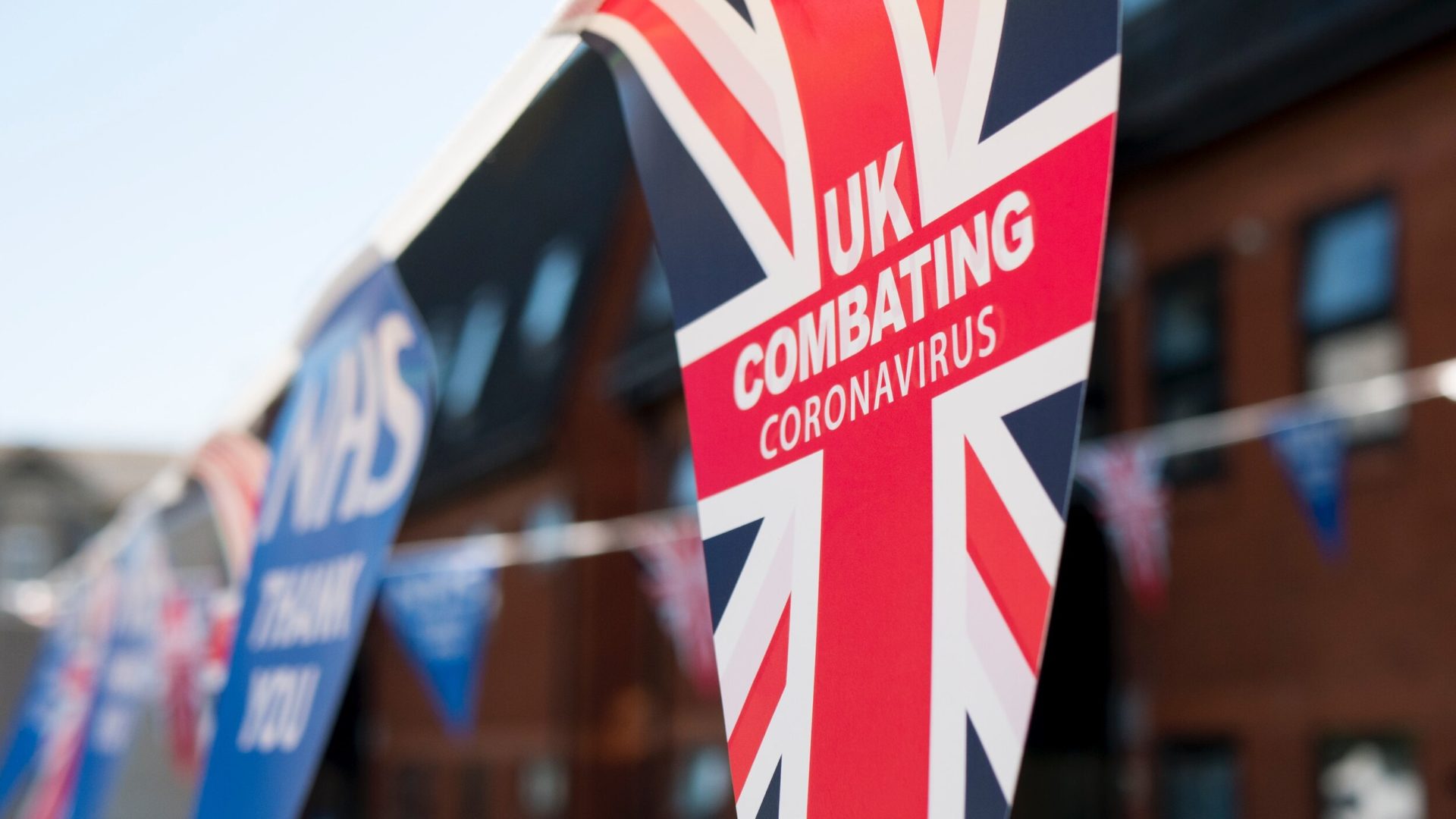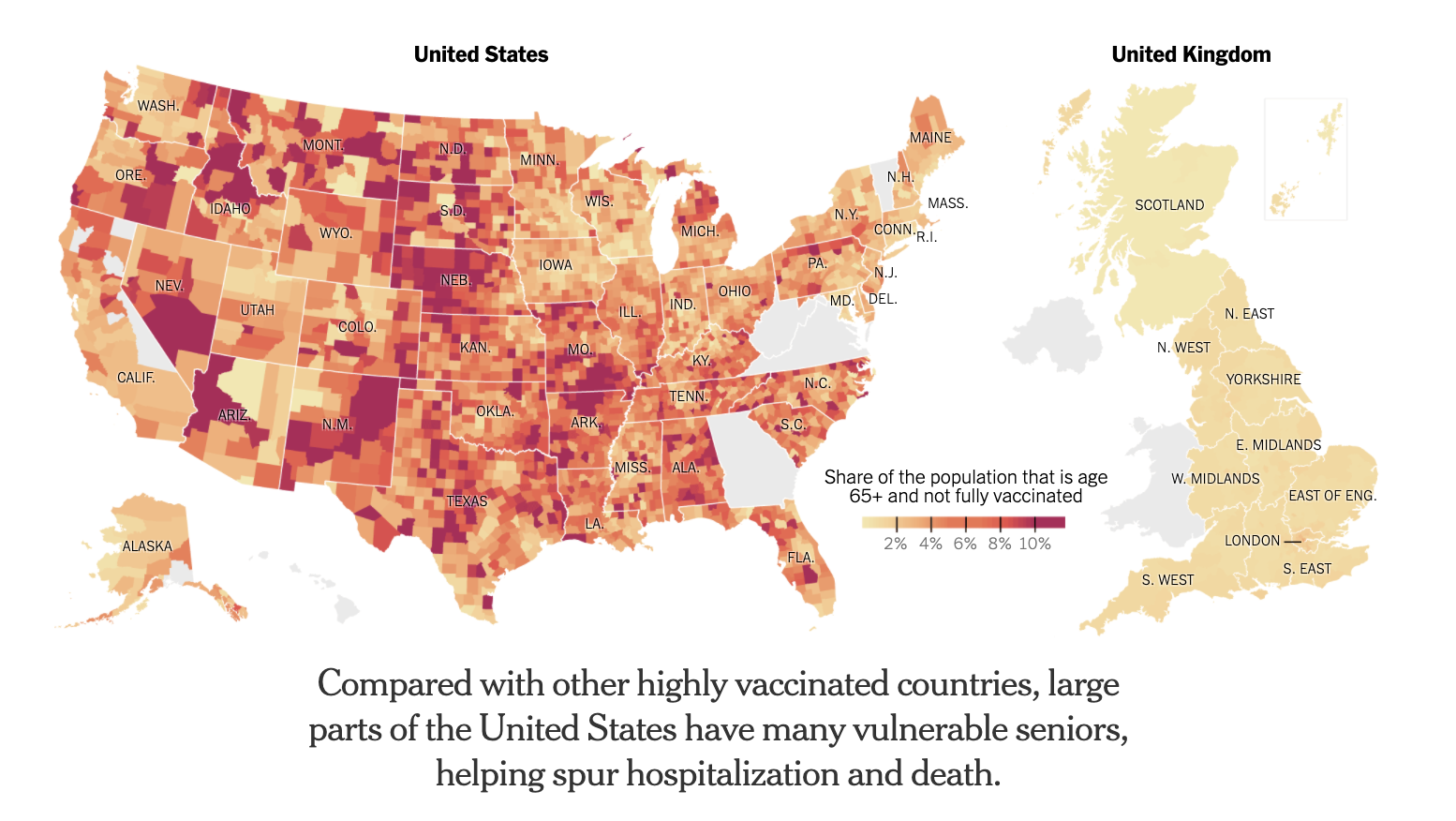
As the United States wages war against COVID-19 and the potent Delta variant, it is stunning to me that our county continues to fight against this invisible enemy without using every tool in our arsenal – or, in some cases, completely unarmed.
Perhaps the best way to illustrate the extent to which we are dragging our heels here at home is to examine the responses of other Western democracies. If one were to go onto The New York Times, you would see the following chart comparing the United States to the United Kingdom – our European cousin.

The ‘heat map’ above shows the regions in each country where people 65 and older are living and are not fully vaccinated. The lightest shades indicate areas where less than 2% of seniors are not fully vaccinated, and the darker shades indicate more than 10% of seniors are not fully vaccinated. It is one of many glaring examples of the difference between our two countries.
Certainly, it would not be surprising if the vaccine hesitancy, by geographic region, among seniors in the U.S. was also similarly represented in the remainder of the population of that area. Odds are good that the prevailing attitudes among the rest of the population in a geographic region would not be all that different from the senior citizen population.
And the numbers don’t lie. While a paltry 52% of the U.S. population are fully vaccinated (62% with at least one dose), the U.K. has 64% of its population is fully vaccinated (72% with one dose). In terms of the number of deaths, the U.S. is seeing a daily average of 1,348.1 people compared to an average of 100.6 in the UK.
The U.S. has a much larger population, of course, so the daily average of cases and deaths are asymmetrical. Still, framed per 100,000 people, the U.K. sees 0.18 deaths whereas we see 0.41 deaths – more than double their rate.
So, why such a difference? Despite the mountain of evidence that the COVID vaccines offer effective protection against the virus, and are successful at preventing hospitalizations and deaths, many American communities are not getting vaccinated. While the U.K. doesn’t have a vastly higher vaccination rate than the U.S., there are no ‘pockets’ where there are larger percentages of unprotected citizens, making them more vulnerable to severe health outcomes, and putting a disproportionate strain on medical centers in those regions.
This fact is reflected in the following chart from The New York Times, which compares three key statistics – cases, hospital admissions, and deaths – between the U.S. and the U.K. since October 2020. Although all areas are up from two months ago due to the aggressive Delta variant, we see a stark contrast between severe health outcomes.

The data from the U.K. shows that although their spike in cases from the Delta variant has thus far been even more significant, relative to the winter peak, than the recent surge in the U.S., the level of hospitalization and mortality experienced in the U.K. is completely different than what we are seeing here. Although these surges are far from over, the U.K.’s numbers have risen to only about 20% of their winter peak in hospitalizations, and 5% of their winter peak in their 7-day average daily death toll.
In the U.S., even though we are about a month behind a true ‘apples to apples’ comparison, these numbers are rapidly climbing and currently stand at 75% of our winter peak in hospitalizations and 30% of our winter peak in the 7-day average of deaths from COVID-19. A month from now, these numbers will likely be far higher than today.
So, in terms of the impact on our population, the gap between the U.S. and the U.K. we are seeing now is not even close.
Much of the current toll COVID-19 is taking on our nation was completely avoidable. Millions of vaccine doses are sitting in U.S. warehouses, gathering dust, for one reason or another. This is the real tragedy of this pandemic – the cost we weren’t willing to avoid, for one reason or another.
Everyone has their own perspectives, theories, or reasons for doing what they do, but the numbers are the numbers, and what the numbers tell us now is we have missed a huge opportunity to spare a lot of lives, ease a lot of suffering, and unburden our overworked and under-appreciated health care workers.
The fact that we chose this path is unconscionable. We can do better.






